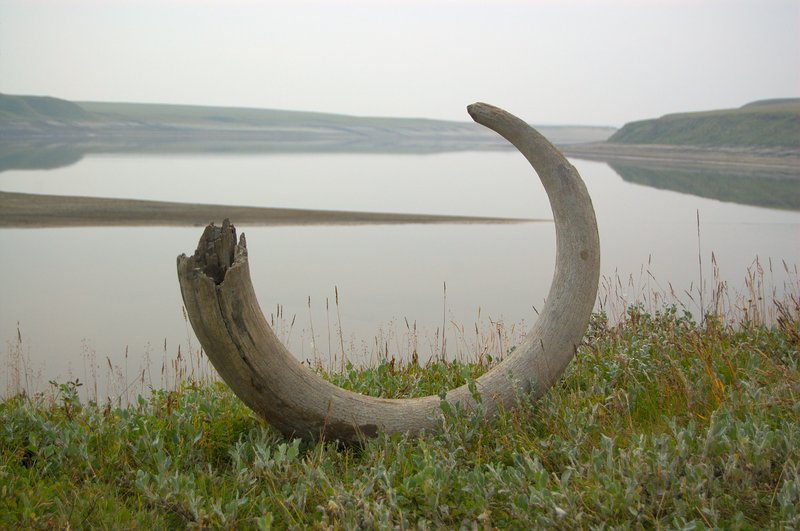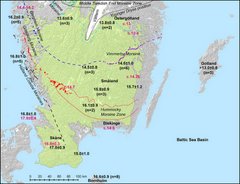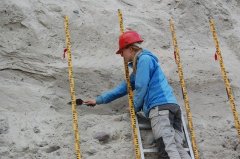Research > Expedition to Taymyr
Research expedition to Taymyr

Mammoth tusk by the Logata river, Taymyr.
During the ice ages the Taymyr peninsula in northern Siberia was periodically covered by an ice sheet centred over the Barents and Kara Sea.
As this ice sheet was largely marine based it was especially sensitive to changes in sea level and climate, much like the West-Antarctic
Ice Sheet today. During the summer of 2012 I participated in a seven week expedition to Taymyr where one of the aims where to take samples
to date the ice advances over the area. For this purpose we travelled in zodiacs along the Luktakh, Upper Taymyr, and Logata rivers, a distance of almost 350km.
More photos from the expedition can be found here and the field reports from the expedition are available
here.
Read more
Sediment cores reveal the ice age history of the Baltic Sea
Investigations of sediment cores from Kriegers Flak in the southern Baltic Sea reveal the deveolpment of the region
during the last 55 thousand years. It is a dynamic history with repeated glaciations but also periods with brackish
conditions and periods when parts of the current Baltic Sea were dry land.
Read more.
 New deglaciation chronology for south Sweden
New deglaciation chronology for south Sweden
In this study we present new age constraints for the deglaciation of southern Sweden based on cosmogenic surface exposure dating.
We also provide a map with suggested deglaciation ages based on the new data and selected existing dates from the region.
Read more.
 Ice free conditions in central Sweden in the middle of the last ice age
Ice free conditions in central Sweden in the middle of the last ice age
The Scandinavian ice sheet at its largest extent covered large parts of northern Europe. However, during parts of the last ice age the ice sheet was
significantly reduced. In this study we have studied sediments outside of Idre, west-central Sweden, and found
that the area must have been ice free at som point between 50 and 40 thousand years ago, in the middle of the last ice age.
Read more.
Back to the research overview

